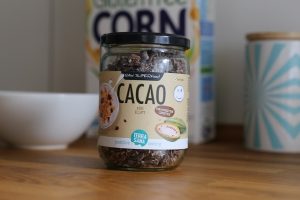Latest Survey Shows Soaring Food Prices Have Influenced Consumer Dining Behavior
Skyrocketing food prices over the past few years, have influenced consumer behavior, as revealed by
a poll conducted by Givex last April, involving 1,000 American respondents. Mo Chaar, the Chief Commercial Officer of the Canada-based analytics company, remarked that the results indicated that the prevailing economic challenges have understandably changed the American people’s dining-out behavior.
 The changes noted based on the results of the survey, nearly half (47%) of the respondents said that in the past year, they went out to eat at restaurants less frequently than they did in the previous year. Forty-five percent (45%) said they have also cut back on ordering food delivery.
The changes noted based on the results of the survey, nearly half (47%) of the respondents said that in the past year, they went out to eat at restaurants less frequently than they did in the previous year. Forty-five percent (45%) said they have also cut back on ordering food delivery.
 Majority (78%) of the Americans who responded to the survey said that menu prices have been significantly higher than they were last year. As dining out has become increasingly more challenging, about 60% of the poll respondents said they are now into cooking meals and dining at home.
Majority (78%) of the Americans who responded to the survey said that menu prices have been significantly higher than they were last year. As dining out has become increasingly more challenging, about 60% of the poll respondents said they are now into cooking meals and dining at home.
Price Sensitivity Increased Consumer Appreciation for Restaurant with Promotional Offers
Mo Chaar also remarked that because of the resulting price-sensitivity among consumers, a large percentage of the Americans who responded say that when deciding to dine out, they seek out restaurants with offers of promotional discounts, deals and loyalty programs. Actually, 86% said that they are overwhelmingly attracted to promotions like Buy 1 Get 1 (BOGO).
Eighty-one (81%) said they are attracted to restaurants that offer coupons and discounts, while 65% are motivated by the incentives offered by those with loyalty programs. Actually, 87% of the total respondents said that they have become a member of at least one loyalty program, citing the loyalty programs offered by grocery chains and supermarkets as the most important affiliation,


 The Superfood trend began in the 1980s but didn’t really catch on because fast food offerings were still popular among adults, teens and even children. It was only during the turn of the millennium in the year 2000 when consumers started taking notice of the so-called superfoods. Mainly because two decades of consuming high-calorie fast food had caused several and varying health issues; with obesity as the number one trigger factor.
The Superfood trend began in the 1980s but didn’t really catch on because fast food offerings were still popular among adults, teens and even children. It was only during the turn of the millennium in the year 2000 when consumers started taking notice of the so-called superfoods. Mainly because two decades of consuming high-calorie fast food had caused several and varying health issues; with obesity as the number one trigger factor. A type of
A type of 
